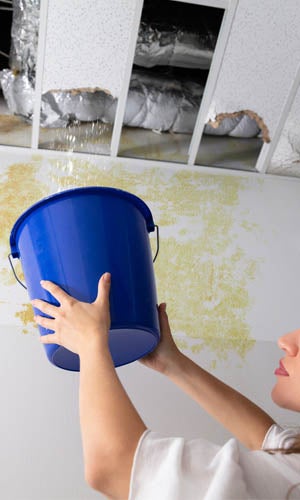6 Ways to Find Concealed Water Leakages in Your Residence
6 Ways to Find Concealed Water Leakages in Your Residence
Blog Article
We have come across the article involving Detecting hidden plumbing leaks listed below on the web and reckoned it made sense to relate it with you here.

Early detection of leaking water lines can minimize a prospective catastrophe. Apart from conserving you cash, it will decrease the irritation and also irritation. The moment you find a leakage, calling your plumber for fixings is the very best service. Nonetheless, some small water leakages may not show up. If you can not detect it with your nude eyes, right here are some hacks that help.
1. Examine the Water Meter
Examining it is a proven method that assists you discover leakages. If it relocates, that suggests a fast-moving leakage. This indicates you might have a slow-moving leakage that might also be underground.
2. Check Water Usage
Assess your water expenses and also track your water consumption. As the one paying it, you ought to observe if there are any kind of inconsistencies. If you find sudden changes, regardless of your usage being the same, it indicates that you have leakages in your plumbing system. Remember, your water costs must fall under the exact same array monthly. An abrupt spike in your expense shows a fast-moving leak.
A stable boost every month, also with the same practices, shows you have a sluggish leakage that's additionally gradually escalating. Call a plumber to thoroughly examine your building, especially if you feel a warm area on your flooring with piping underneath.
3. Do a Food Coloring Test
30% comes from bathrooms when it comes to water intake. Test to see if they are running appropriately. Drop flecks of food color in the container and also wait 10 mins. There's a leak in between the storage tank and also bowl if the shade in some way infiltrates your bowl during that time without flushing.
4. Asses Outside Lines
Don't forget to examine your outside water lines too. Must water permeate out of the link, you have a loose rubber gasket. One little leak can squander heaps of water and surge your water bill.
5. Inspect and also Evaluate the Scenario
Homeowners need to make it a practice to check under the sink counters and also also inside cupboards for any bad odor or mold growth. These two warnings suggest a leak so prompt interest is called for. Doing regular examinations, also bi-annually, can save you from a major trouble.
Examine for discolorations and damaging as most pipes and also devices have a life span. If you think leaking water lines in your plumbing system, don't wait for it to escalate.
Early detection of dripping water lines can alleviate a possible catastrophe. Some tiny water leakages may not be noticeable. Examining it is a proven method that aids you discover leaks. One tiny leak can throw away bunches of water and also spike your water bill.
If you think dripping water lines in your plumbing system, do not wait for it to rise.
WARNING SIGNS OF WATER LEAKAGE BEHIND THE WALL
PERSISTENT MUSTY ODORS
As water slowly drips from a leaky pipe inside the wall, flooring and sheetrock stay damp and develop an odor similar to wet cardboard. It generates a musty smell that can help you find hidden leaks.
MOLD IN UNUSUAL AREAS
Mold usually grows in wet areas like kitchens, baths and laundry rooms. If you spot the stuff on walls or baseboards in other rooms of the house, it’s a good indicator of undetected water leaks.
STAINS THAT GROW
When mold thrives around a leaky pipe, it sometimes takes hold on the inside surface of the affected wall. A growing stain on otherwise clean sheetrock is often your sign of a hidden plumbing problem.
PEELING OR BUBBLING WALLPAPER / PAINT
This clue is easy to miss in rooms that don’t get much use. When you see wallpaper separating along seams or paint bubbling or flaking off the wall, blame sheetrock that stays wet because of an undetected leak.
BUCKLED CEILINGS AND STAINED FLOORS
If ceilings or floors in bathrooms, kitchens or laundry areas develop structural problems, don’t rule out constant damp inside the walls. Wet sheetrock can affect adjacent framing, flooring and ceilings.
https://www.servicemasterbyzaba.com/blog/how-to-detect-water-leakage-in-walls/

As an avid person who reads on Finding hidden leaks, I imagined sharing that editorial was important. Sharing is good. Helping people is fun. Thank you so much for going through it.
Report this page